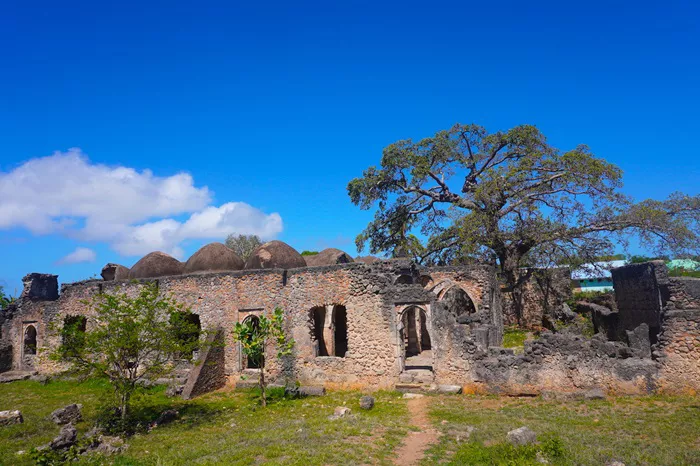Over 140 tourists from 13 different countries have flocked to the historic islands of Kilwa Kisiwani and Songo Mnara in southern Tanzania, rekindling the global spotlight on the nation’s coastal treasures and their deep-rooted Swahili heritage.
Situated in Kilwa District of Lindi Region, these twin UNESCO World Heritage Sites stand as silent witnesses to centuries of trade, culture and architecture that once made the East African coast a vibrant center of the Indian Ocean trade network.
According to local tourism officials, the recent wave of visitors marks a positive shift after years of modest arrivals. Many of the tourists came from European and Asian countries such as Germany, France, Italy, South Korea, Singapore and Portugal. Others travelled from the United States and Canada, drawn by the region’s serene beauty and historical depth.
Boat rides from the Kilwa Masoko jetty lead visitors to coral-stone ruins that rise dramatically above the turquoise sea. On Kilwa Kisiwani, the famous Great Mosque of Kilwa, believed to date back to the 11th century, remains one of the oldest standing mosques on the East African coast. Nearby are the remnants of Husuni Kubwa, an ancient palace that once hosted sultans and traders from Arabia, India and Persia.
On the neighboring island of Songo Mnara, visitors explore a smaller but equally captivating ruin site — complete with residential courtyards, carved doorways and stone-lined wells that tell stories of everyday Swahili life from more than 500 years ago.
Tour operators say the growing interest in Kilwa’s heritage is partly due to new promotional campaigns that highlight Tanzania’s lesser-known historical destinations beyond the usual safari and mountain circuits. Local guides have also played a vital role, offering storytelling tours that connect visitors to the people, architecture and spiritual legacy of the Swahili civilization.
Also Read: South Sudan President Fires Finance Minister Again
However, as the number of tourists grows, preservation concerns are also rising. Conservationists warn that uncontrolled visitation and limited infrastructure could damage fragile coral-stone walls and ancient pathways. They stress the need for sustainable management that balances economic gain with heritage protection.
Community leaders in Kilwa District believe the renewed attention will open new opportunities for local livelihoods — from guiding and boat transport to the sale of handmade crafts and local foods. “This place is not only our history, it’s our pride,” said one guide. “When visitors come, they don’t just see ruins; they see who we are.”
The Tanzanian tourism board has pledged to continue promoting cultural tourism while supporting efforts to conserve these ancient landmarks. For travelers seeking more than beaches and wildlife, Kilwa Kisiwani and Songo Mnara offer an unforgettable journey into Africa’s maritime past — a story still unfolding along Tanzania’s timeless coast.







